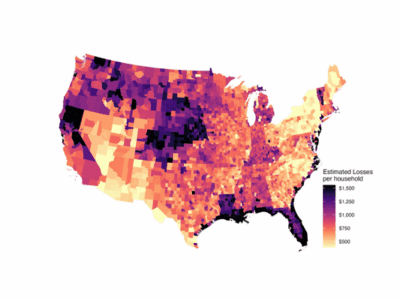What’s in a Name?
“Climate change”? “Disruption”? “Crisis”? “Emergency”? Why is this so hard?
We seem to have a lot of trouble in coming up with the right name for what’s happening to the world’s climate. We started with “Global Warming.” But that seemed too narrow, because the changes don’t just relate to temperature, and too innocuous, because warming seems like a gentle process. So scientists shifted to “Climate Change.” That’s accurate but doesn’t say much about what’s changing, in what direction, and why it might be a problem. More recently, people have tried alternatives to the word “change”: “disruption,” “crisis,” and “emergency.”
This is more than a branding issue. It also reflects something deep about the nature of the climate problem.
One reason we have so much trouble naming the problem is that it really isn’t like anything else that we’ve faced. Adding the word “global” captures some of the difference: we’ve faced few problems that impact the whole world and require global cooperation to address. But the climate situation is distinctive in other ways. First, it is caused by the continual addition of greenhouse gases to the atmosphere, not by a distinct triggering event. That’s one reason the word “emergency” doesn’t seem quite right.
Second, it’s not a one-shot event. It’s not that climate will change once and then we’re done. It will change and then change again as more carbon is added to the atmosphere and as various feedback loops play out. So crisis doesn’t seem quite right, since it implies things will settle down after the crisis. Even disruption seems to imply there’s a “normal” that we might get back to. Third, the impacts of our activities will extend over centuries, far beyond the normal kinds of policy decisions (let alone personal or business decisions) that we usually face. And fourth, what is most important is not the change in the average temperature or precipitation — what we normally mean by the word “climate” — but changes in the extremes, such as more frequent and more severe storms, floods, heat waves and droughts.
You probably remember the story of the blind men trying to describe an elephant: one touches a leg and thinks it’s a tree trunk, another the nose and thinks it’s a snake, and so forth. We’re not in quite that position. We can see that it has four legs like tree trunks, tusks like spears, a nose like a snake, a body like a boulder. But never having seen an elephant before, we have no name for the entire creature. I guess we could call it a “huge animal with four tree trunks, spears, and a snake,” but that doesn’t really capture the actual elephant. Based on this metaphor, I thought about titling this post “Naming the Elephant,” but that seemed to be a bit too obscure.
Similarly, with climate change, we could call it the “irreversible human-caused global intensification of extreme weather events.” That’s a bit of a mouthful, however. I think I’d lean toward Global Climate Destabilization, but I don’t expect that to catch on either.
From a policy point of view, climate change is also unique, because so many different countries are involved in producing substantial emissions, because the impacts are also global, because the time span is so enormous, and because solutions involve reengineering major sectors of the economy. No wonder it has been called a super-wicked problem. And no wonder it’s hard to come up the right name for something that’s so big, so exceptional, and so threatening.
Reader Comments
4 Replies to “What’s in a Name?”
Comments are closed.







Global Climate Collapse. Technically it may not be 100% accurate, but it conveys the essence in a compact hardhitting form.
Another very well written primer for understanding whatever you end up calling “something that’s so big, so exceptional, and so threatening.”
However, you and your colleagues must immediately implement a way to disseminate this information to the public around the world because the global disasters we are experiencing today are completely out of control. Time has most certainly run out to protect the future quality of life for our newest generations even at the levels we experience today.
The worst case scenario proof of our failure to protect our future is the fact that our own CALIFORNIA alumni magazine produced one of the best warning documentations in their 2006 “Global Warning” special issue and we are nowhere near controlling the big, exceptional and threatening levels today 2020. The saddest reality check is you haven’t even figured out what to name it!
Have also followed the Global Warming to Climate Change now (May 2020) it is “Resilience”. All of this is why I refer to my work as being “Qualitative Economics” that I have books and paper published on the topic — and more coming. My work and research is directly due to my graduate school work in Linguistics and Law. There is more —-
The name is not so hard if the understanding is there. More important is the politicization and popularization of the name. When the US federal government forbids the use of the popular name in order to make discussion and acknowledgement of this issue difficult, that is where confusion of the public and of scientific discourse becomes the crisis. The name “climate change” was broadly understood correctly, and the nuances were addressed in specific discussions. But any name can be used and abused. Think of all the policy titles coming out of the current administration and how they hide the true intent of the policy.